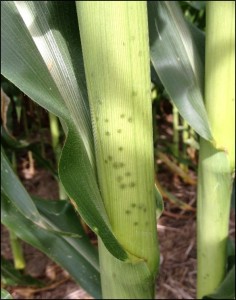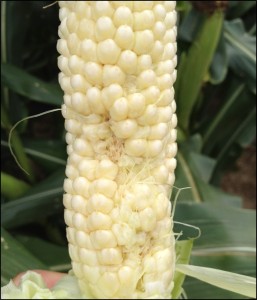Stink Bug
go.ncsu.edu/readext?898274
en Español / em Português
El inglés es el idioma de control de esta página. En la medida en que haya algún conflicto entre la traducción al inglés y la traducción, el inglés prevalece.
Al hacer clic en el enlace de traducción se activa un servicio de traducción gratuito para convertir la página al español. Al igual que con cualquier traducción por Internet, la conversión no es sensible al contexto y puede que no traduzca el texto en su significado original. NC State Extension no garantiza la exactitud del texto traducido. Por favor, tenga en cuenta que algunas aplicaciones y/o servicios pueden no funcionar como se espera cuando se traducen.
Português
Inglês é o idioma de controle desta página. Na medida que haja algum conflito entre o texto original em Inglês e a tradução, o Inglês prevalece.
Ao clicar no link de tradução, um serviço gratuito de tradução será ativado para converter a página para o Português. Como em qualquer tradução pela internet, a conversão não é sensivel ao contexto e pode não ocorrer a tradução para o significado orginal. O serviço de Extensão da Carolina do Norte (NC State Extension) não garante a exatidão do texto traduzido. Por favor, observe que algumas funções ou serviços podem não funcionar como esperado após a tradução.
English
English is the controlling language of this page. To the extent there is any conflict between the English text and the translation, English controls.
Clicking on the translation link activates a free translation service to convert the page to Spanish. As with any Internet translation, the conversion is not context-sensitive and may not translate the text to its original meaning. NC State Extension does not guarantee the accuracy of the translated text. Please note that some applications and/or services may not function as expected when translated.
Collapse ▲Biology

Brown Stink Bug on corn stalk
The brown stink bug (Euschistus servus Say) is the primary grass feeding stink bug in North Carolina and can be commonly found in both wheat and corn fields. Both species are bivoltine (two generations) in the state and overwinter as adults in organic residues and litter. Adults emerging in the spring sustain themselves and reproduce on various wild and cultivated hosts before the second generation moves to cultivated hosts. Bugs feed by piercing the plant and sucking the plant juices.
Injury and damage
Brown stink bug feeding can be a severe problem in seedling corn, although this is rarely encountered in North Carolina. The Stink Bug Scouting Guide for Field Corn in the Southeastern US extensively covers how to scout for this insect.
Bugs feed at the base of seedlings and cause tissue death at or near the growing point (meristem). Damaged plants will die or sucker if the growing point is killed. Stink bug-damaged plants may be deformed and show bands of holes in the leaves, much like billbug damage. When stink bug numbers are high, seedling loss can be severe. High stink bug populations in seedling corn are confined to no-tillage corn planted into soybean/wheat stubble, small grain cover crop, or failed small grain crop (e.g. freeze damaged wheat). In these situations, scouting for seedling pests will detect economically damaging stink bug populations.


During the season brown stink bug will feed on all plant parts but prefers seedlings and developing grain. Seedlings can be deformed and killed; grain may be aborted from the ears. Damaged ears often crook away from the plant stem as a result of aborted grain and lack of ear elongation on the outside ear surface. Feeding on leaves and stems creates discolored and deformed stippled spots on the plant surface.
Insecticide Management
Seed treatments may provide protection for a brief time period following emergence. If stink bugs are detected in seedling corn at economically damaging levels, a list of recommended insecticides can be found in the NC Agricultural Chemicals Manual. Stink bug management in corn is covered following this link and includes our most up-to-date economic thresholds.


